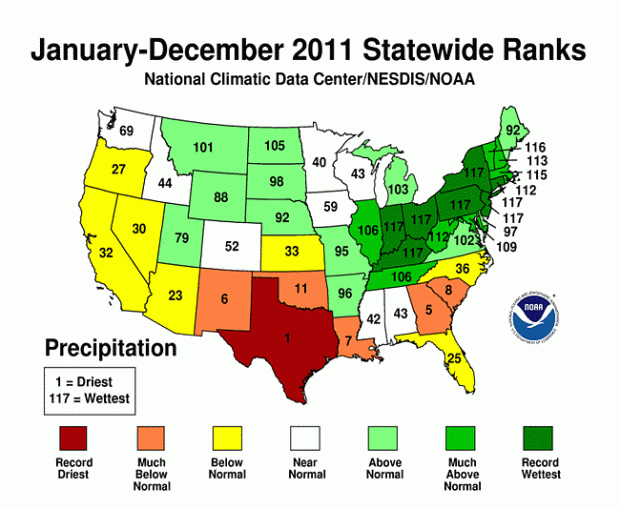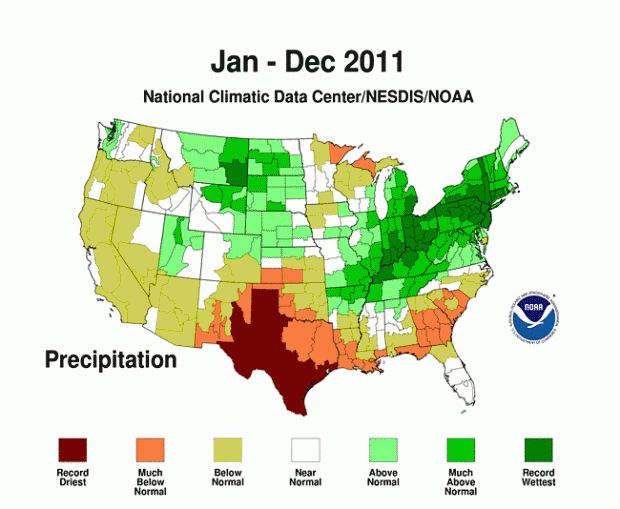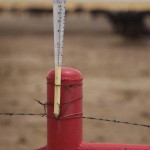Texas and the Terrible, Horrible, No Good, Very Bad Year
New year-end data and maps from the government show what a year 2011 was for heat and drought in Texas. Records were broken across the state, as extreme weather reached levels never seen before.
First, Texas was truly a red state last year, winning the distinction of being the driest state in the nation. States in the northeast, however, had their wettest years ever:
Map by NOAA
Some more detailed data gives a sense of how intense the drought was for all of Texas and portions of surrounding states:
Map by NOAA
And then there are the year-end numbers on rain and heat for Texas:
- Amarillo, Lubbock, Wichita Falls and Victoria all had their driest years on record. Lubbock has 5.86 inches of rain for the entire year — several inches below their previous record of 8.73 inches in 1917.
- Several cities had their hottest year on record: Austin, College Station, Midland and San Angelo. The hottest of them all? Brownsville, on the Texas-Mexico border, which also had a record-breaking year of heat. The average temperature for the year there was 76.1 degrees.
- No city got off easy. While the Dallas Fort-Worth area had decent rainfall compared to the rest of the state, they didn’t escape the heat. Their average temperature for the year was 68.6 degrees, the third-hottest year recorded.
The good news? Rains have been falling across much of the state over the last month, totaling more than we received during the same period last year. Here’s a map showing rainfall totals in Texas for December 2010:
And here’s one for December 2011, with several inches more of rain for much of the state:
It also looks like the weather pattern behind the drought, La Niña, will be departing sometime in the spring. State meteorologist George Bomar gave testimony yesterday before a state Senate committee on what that means:
“There is a ray of hope for Texas. The second phase of La Niña is now near its peak, and all of the computer models that predict its future point to a return to near-normal water temperatures in the central Pacific midway through 2012. It is true that La Niña can resurge a second time (for a third phase)—but that is rather unlikely. Instead, La Niña should be quite weak—if not vanished altogether—before spring is over. But that is not good enough for Texas’ needs.
The bottom line appears to be this: The rest of this winter will be quite dry, and there is little to suggest spring will live up to its potential to end our drought. Even the approaching summer does not appear capable of producing the kinds of rains we need, especially if the hurricane season is as uneventful as last year’s. We have little reason to expect major relief from drought—especially the “hydrologic” variety—until deep in 2012, if then.”







